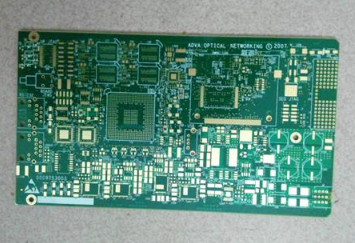1. What is FPC flexible circuit board
FPC flexible circuit board, English called Flexible Printed Circuit, commonly known as "soft board", is a printed circuit made of flexible insulating substrates such as polyimide or polyester film. It is flexible. Short, small, light and thin are its characteristics. Flexible printed circuit boards are also divided into single-sided, double-sided and multi-layer boards. Flexible circuit boards are mainly used in the connection parts of electronic products.
The advantage is that all lines are configured. It eliminates redundant cable connection work; can improve flexibility. Strengthen the three-dimensional assembly in a limited space; can effectively reduce the product volume and increase the convenience of carrying; Reduce the weight of the final product.
Flexible circuit board
2. Can it replace the PCB circuit board?
Although the flexible circuit board has the characteristics of high wiring density, light weight, thin thickness, and good flexibility, it is currently not widely used and the technology is relatively immature. Relative to the present, FPC flexible circuit boards cannot replace PCB circuit boards. The main reasons are as follows:
1. Design factors
For PCBs that need to use plug-in components, only rigid boards can be used, which is what you call rigid boards; for many PCBs with stress requirements, only rigid boards can be used
2. Cost factors
The cost of flexible boards is currently much higher than rigid boards, more than doubled.
3. Manufacturing factors
Rigid boards have a higher pass-through rate than flexible boards

FPC flexible circuit board has its special advantages, but its technology still needs to continue to improve. Our country started late and has yet to catch up. One day technology will develop to FPC flexible circuit boards to replace PCB circuit boards.
PCB production process
In SMT processing, printed circuit boards (Printed Circuit Boards) are a key part. It is equipped with other electronic components and connected to the circuit to provide a stable circuit working environment.
Single panel: The metal circuit that provides the connection of the parts is arranged on the insulating substrate material, and the substrate is also a support carrier for installing the parts.
Double-sided board: When the single-sided circuit is not enough to provide the connection requirements of electronic parts, the circuit can be arranged on both sides of the substrate, and through-hole circuits can be deployed on the board to connect the circuits on both sides of the board.
Multilayer board: In the case of more complex application requirements, the circuit can be arranged in a multilayer structure and pressed together, and through-hole circuits are arranged between the layers to connect the circuits of each layer.
Inner line
The copper foil substrate is first cut into a size suitable for processing and production. Before laminating the substrate, it is usually necessary to properly roughen the copper foil on the surface of the board by brushing, microetching, etc., and then attach the dry film photoresist tightly to it at an appropriate temperature and pressure. Send the dry film photoresist substrate to the UV exposure machine for exposure. The photoresist will undergo polymerization in the light-transmitting area of the negative film after being irradiated by ultraviolet light (the dry film in this area will be affected by the later development and copper etching steps. Keep it as an etching resist), and transfer the circuit image on the negative to the dry film photoresist on the board.
After tearing off the protective film on the film surface, first use sodium carbonate aqueous solution to develop and remove the unlit area on the film surface, and then use a mixed solution of hydrochloric acid and hydrogen peroxide to corrode and remove the exposed copper foil to form a circuit. Finally, the dry film photoresist that has worked well is washed away with sodium hydroxide aqueous solution.
For inner circuit boards with more than six layers (inclusive), an automatic positioning punching machine is used to punch out the riveting reference holes for the alignment of the interlayer circuits. The finished inner circuit board must be bonded with the outer circuit copper foil with glass fiber resin film. Before pressing, the inner layer board needs to be blackened (oxidized) to passivate the copper surface to increase insulation; and the copper surface of the inner layer circuit is roughened to produce good adhesion to the film.
When laminating, first riveting the inner circuit boards of six layers (including) with a riveting machine in pairs. Then use a tray to neatly stack them between the mirror steel plates, and send them into a vacuum laminator to harden and bond the films with proper temperature and pressure. After pressing the circuit board, the target hole is drilled by the X-ray automatic positioning target drilling machine as the reference hole for the alignment of the inner and outer layers. And make appropriate fine cutting of the edge of the board to facilitate subsequent processing.
The above is about FPC flexible circuit board, PCB circuit board and PCB board production process